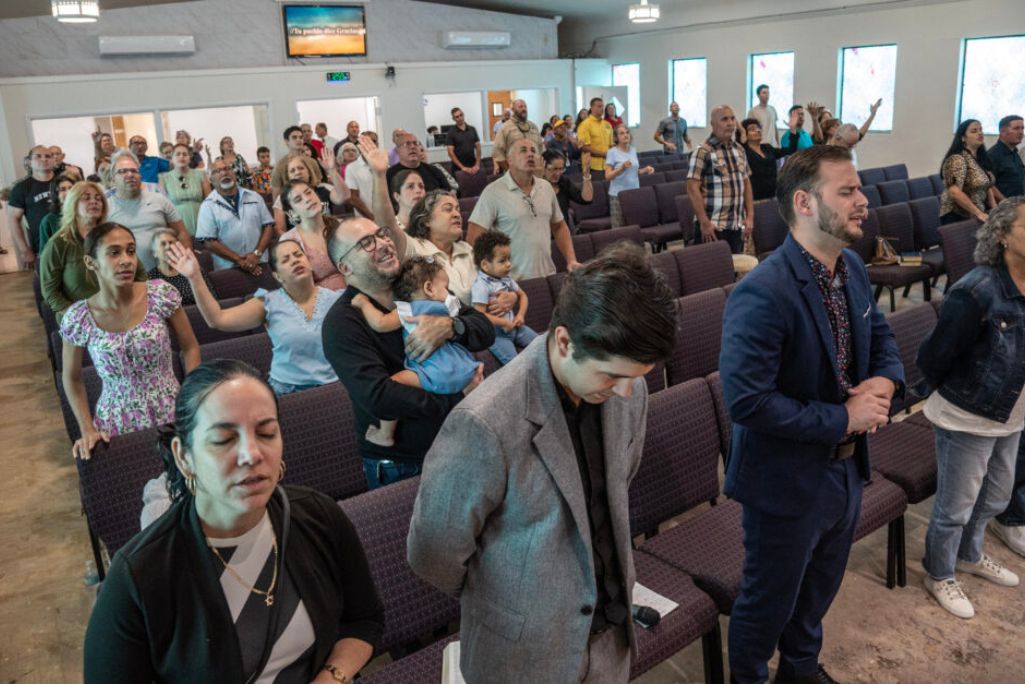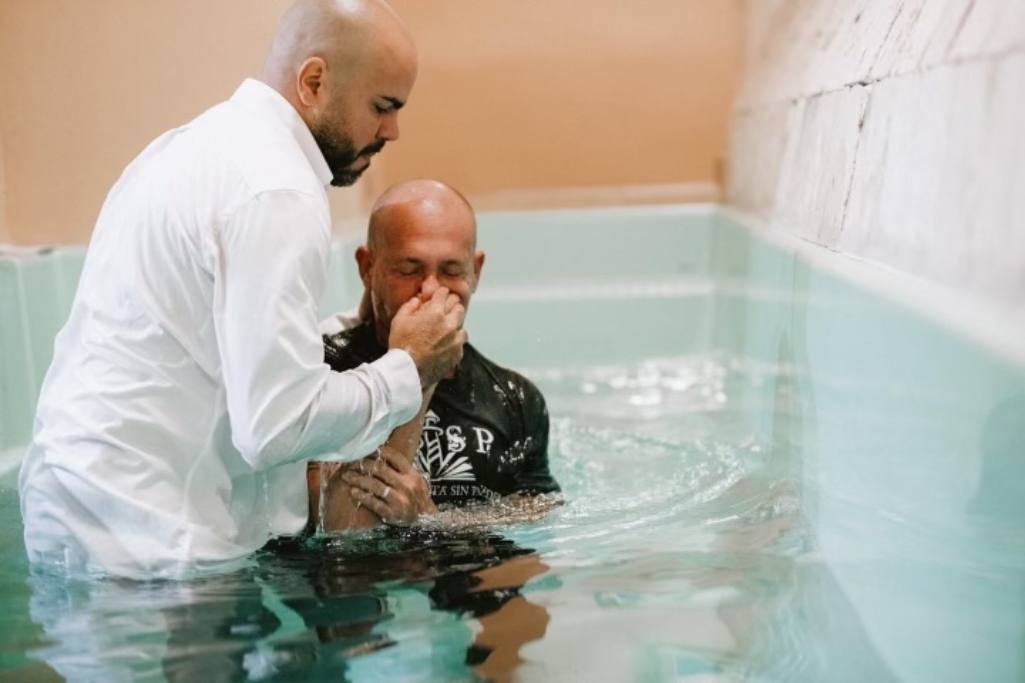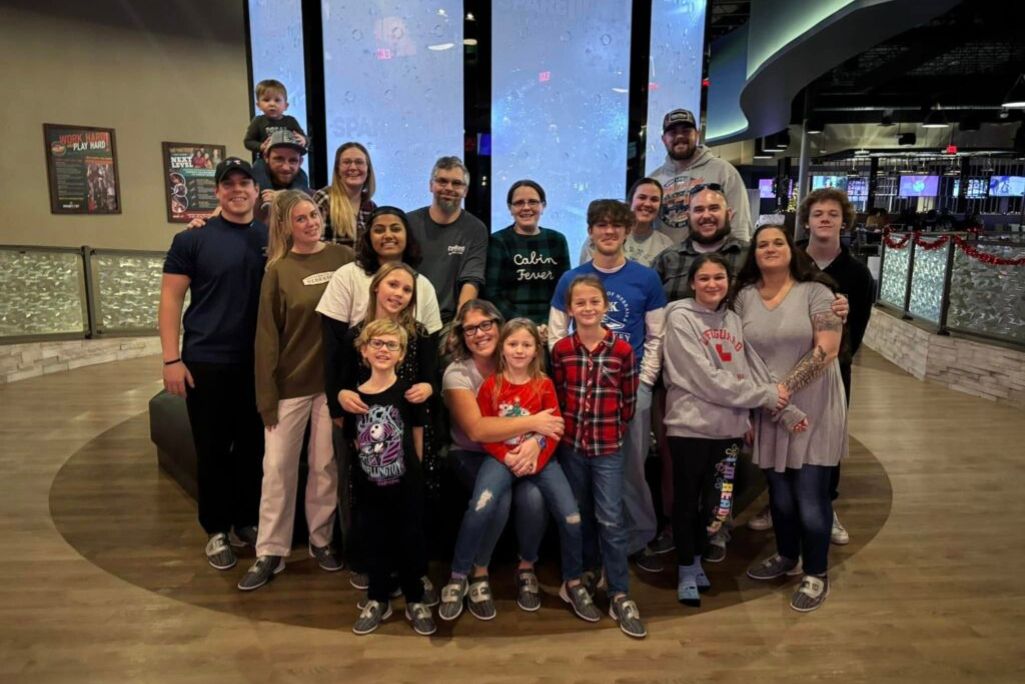
Sunday morning worship service at Iglesia Bautista Bethel in Tampa, Fla.
BRENTWOOD, Tenn. — The church is the church because it is made up of believers in Christ, but the exact expression of a local body of believers may vary depending on context. For decades, the Hispanic population in the U.S. has been growing exponentially, and this growth has implications for many churches.
Hispanic Protestant churches in the United States face unique challenges but are finding success in building community within their congregations and reaching those outside their walls. The latest data from Lifeway Research on the state of Hispanic Protestant congregations in the U.S. paints a compelling picture of what Hispanic Protestant congregations look like, how they are conducting ministry and the challenges their pastors face.
Lifeway Research conducted two studies to understand the landscape of the Hispanic church in the U.S. In 2022, Lifeway Research surveyed 693 pastors of Hispanic Protestant congregations in the U.S., and in 2023, the survey included 554 pastors of Hispanic Protestant congregations in the U.S.
“Every pastor and church planter has questions that are important to their ministry: Is my church relevant to the needs of this community? Should I offer bilingual services? What is the best location for our church plant? What are the most effective discipleship methods to reach Hispanics in our community?” said Carlos Astorga, senior manager of global publishing. “This new report by Lifeway offers insightful, research-based answers to these and many other questions that can inform your strategy as you seek to reach a new generation of Hispanics with the love of Christ.”
Lifeway Research’s Hispanic Protestant Churches in the U.S. Insights Report explores this data and uncovers practical tips for ministry with and to Hispanic neighbors, equipping churches to answer the question, “What next step do we need to take?”
Hispanic congregations in the U.S.
Hispanic churches in the U.S. are often newer, younger and more evangelistically engaged than many other Protestant churches. They serve as spiritual homes for both first-generation immigrants and U.S.-born Hispanics.
“Many of the activities within Hispanic Protestant churches look similar to those in non-Hispanic churches in the U.S. with worship services, prayer meetings, Bible studies and Sunday school classes being common,” said Scott McConnell, executive director of Lifeway Research. “But pastors of Hispanic congregations are quick to point out immigrant families often have less time for church as many are working long hours, have family traditions and are impacted by American cultural distractions.”
Most Hispanic Protestant congregations (54%) have been established since 2000, including 32% founded in 2010 or later. Not only are these congregations relatively new, but most individuals in the congregations are also young and new to the U.S. In the average Hispanic Protestant church, a full third of the congregation (35%) is under the age of 30, and the majority of attendees at these churches are first-generation Americans (58%).
As most Hispanic congregations are made up of first- or second-generation Americans, Lifeway Research found a majority conduct their services only in Spanish (69%), while 18% are bilingual.
Most Hispanic congregations in the U.S. are in the South and West, and most are in cities. Less than 1 in 10 (9%) are in rural areas.
Hispanic church ministry
The research reveals many strengths of Hispanic congregations, including their deep commitment to evangelism, their emphasis on family and community and their ability to reach the next generation.
Almost 4 in 5 pastors at U.S. Hispanic Protestant churches (79%) say they regularly schedule opportunities for members to go out and share the gospel, and 7 in 10 (69%) say their church has seen five or more new commitments to Christ in the past year.
As these new believers join Hispanic Protestant churches, they become part of congregations actively trying to grow together, according to their pastors. Lifeway Research found almost 9 in 10 (88%) say their church has a plan to foster community in their church, including 53% who strongly agree.
Although ministry in Hispanic Protestant churches is thriving in these ways, the research also underscores critical needs among these congregations — such as resources for pastors, strategies for bilingual ministry and support for second-and third-generation Hispanics who often feel caught between cultures.
Where do churches go from here?
No matter a church’s size or context, it is likely the community around them has been impacted by the growing Hispanic population in the U.S. The data from Lifeway Research shows churches have the opportunity to not only serve as missionaries to their Hispanic neighbors who do not yet know Christ but also partner with Hispanic Protestant congregations already investing in evangelism and discipleship in their community.
The Hispanic Churches in the U.S. Insights Report invites church leaders to consider what next step they can take to strengthen their connection with the dynamic and faithful community of Hispanic Protestant churches in the U.S.
“This report will help pastors and church leaders continue the ongoing conversation of how to serve our brothers and sisters in a more strategic way,” McConnell said. “Whether your church is already ministering to Hispanics, considering how to start in your congregation or looking to partner with a Hispanic church in your community, this report is packed with insights to help you take the next step. We pray that as you read this report, you’ll be encouraged and equipped in meaningful ways for what God is calling your congregation to do.”
To explore the complete findings, download the Hispanic Churches in the U.S. Insights Report from Lifeway Research or access the Spanish version of the report.
(EDITOR’S NOTE — Marissa Postell is a writer for Lifeway Christian Resources.)


